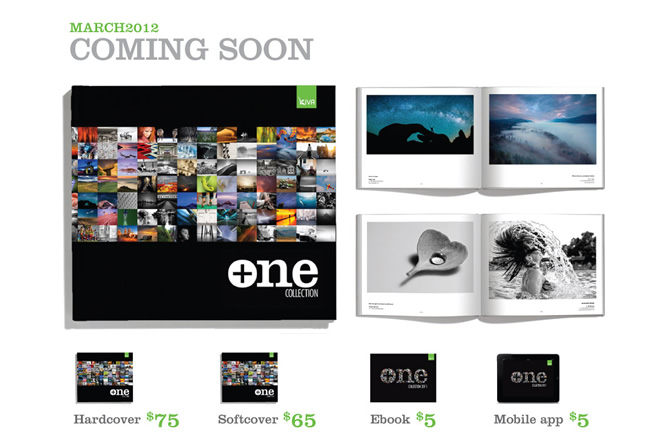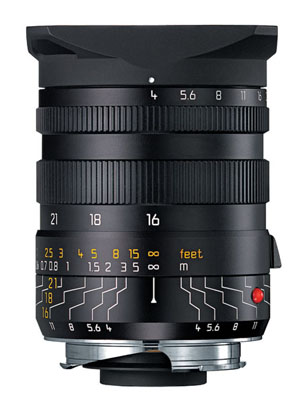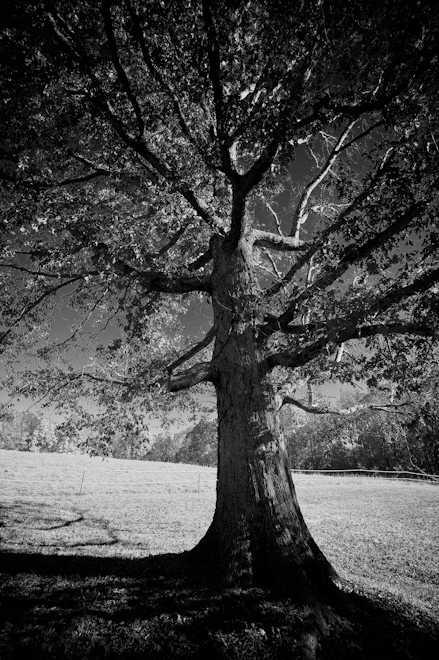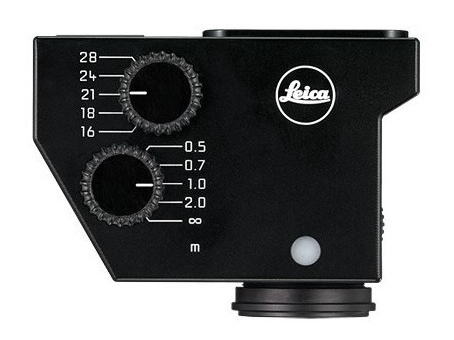One of my photos has been chosen for the Plus One Collection. The selection of Google+ posted photos is being published in book, E-book, and app form. All profits go to the Kiva charitable organization.
Leica Camera Blog
News & Reviews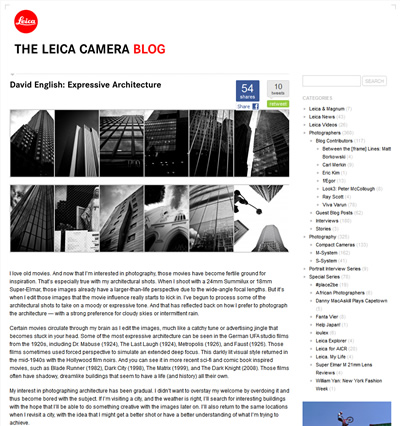
I’ve written an eighth guest post for the Leica Camera Blog. It’s titled Expressive Architecture. My previous guest posts were Radiant Light, Fun with Diagonals, The Versatile 24 Lux, Going Wide-Angle, Going Ultra-Wide, Color or Black-and-White, and Surreal Vegas.
Leica Camera Blog
News & Reviews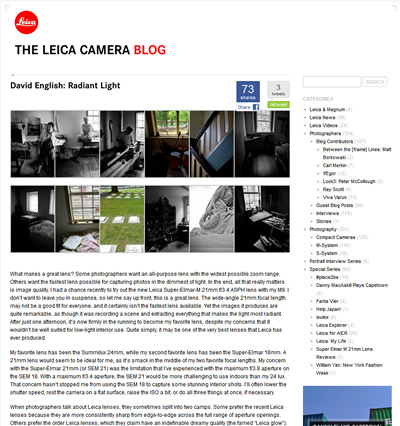
I’ve written a seventh guest post for the Leica Camera Blog. It’s titled Radiant Light. My previous guest posts were Fun with Diagonals, The Versatile 24 Lux, Going Wide-Angle, Going Ultra-Wide, Color or Black-and-White, and Surreal Vegas.
Leica Camera Blog
News & Reviews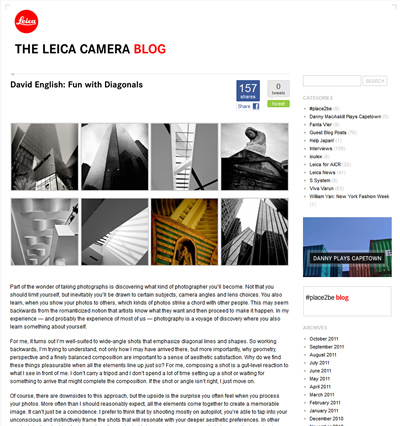
I’ve written a sixth guest post for the Leica Camera Blog. It’s titled Fun with Diagonals.
My previous guest posts were The Versatile 24 Lux, Going Wide-Angle, Going Ultra-Wide, Color or Black-and-White, and Surreal Vegas.
Digital Photography School
News & Reviews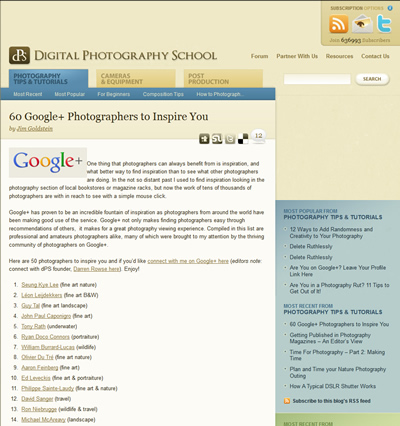
Digital Photography School has listed me as one of “60 Google+ Photographers to Inspire You.” You can find me on Google+ here.
Leica Camera Blog
News & Reviews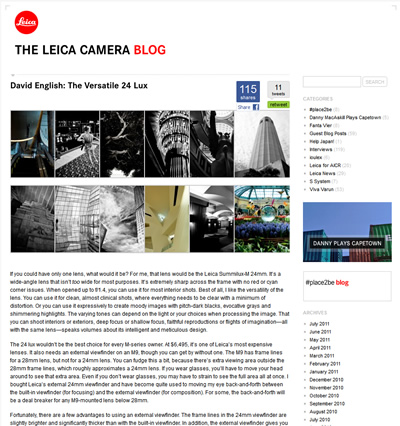
I’ve written a fifth guest post for the Leica Camera Blog. It’s titled The Versatile 24 Lux. My previous guest posts were Going Wide-Angle, Going Ultra-Wide, Color or Black-and-White, and Surreal Vegas.
Leica Camera Blog
News & Reviews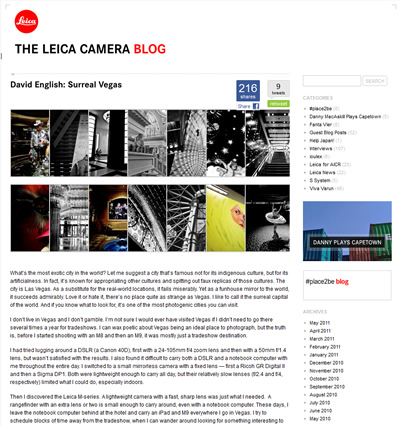
I’ve written a fourth guest post for the Leica Camera Blog. It’s titled Surreal Vegas. My previous guest posts were Going Wide-Angle, Going Ultra-Wide, and Color or Black-and-White.
Leica Camera Blog
News & Reviews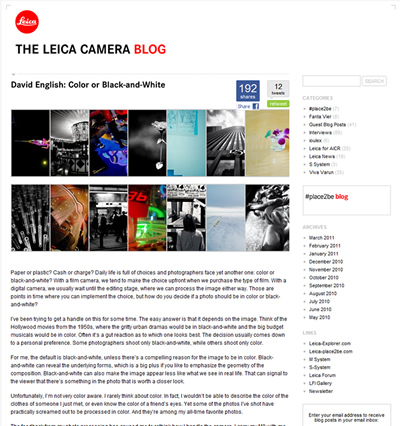
I’ve written a third guest post for the Leica Camera Blog. It’s titled Color or Black-and-White. My previous guest posts were Going Wide-Angle and Going Ultra-Wide.
A Versatile Wide-Angle
News & ReviewsLeica Tri-Elmar-M 16-18-21mm Asph. Lens
I’ve been happy with the Leica 18mm Super-Elmar lens, so I figured I wouldn’t need (or want) the Leica Tri-Elmar 16-18-21mm lens on my M9. Turns out, I couldn’t have been more wrong.
Often referred to as the WATE (Wide-Angle Tri-Elmar) to distinguish it from the MATE (28-35-50mm Medium-Angle Tri-Elmar), this lens is unusual for Leica in that it covers more than one focal length. Zoom lenses are the norm with point-and-shoot and DSLR cameras, however with rangefinder cameras, such as the Leica M9, fixed-focal-length lenses are the norm. A fixed-focal-length lens usually provides a sharper and more consistent image than you can achieve with a zoom lens.
The biggest advantage for the three-focal-length WATE over a fixed-focal-length lens is not having to change lenses as often. The biggest disadvantage? The maximum aperture is f/4, so it wouldn’t necessarily be the best choice for low-light situations.
Since my 18mm is in the middle of the WATE’s focal length range and is slightly faster at f/3.8, why have I fallen in love with this unusual lens? First off, I like to shoot wide-angle, so I was curious to see how a 16mm would perform. I currently have the WATE on loan for two weeks, and I was struck by how differently it renders from my 18mm.
While both lenses are incredibly sharp from edge to edge, the WATE is less clinical in its sharpness. It also has a bit more contrast. Those qualities aren’t necessarily better. They’re just different.
The 18mm SE was a better choice for photographing Manhattan buildings
with precise lines and hard edges.
The WATE was a better choice for photographing a tree in late afternoon
with evocative shadows and luminous grays.
These differences can be emphasized in your post-processing so that the unique character of each lens is enhanced. You might sharpen an 18mm SE photo more than usual to bring out the cleanness of the lines, or you might darken a WATE photo more than usual to intensify a dreamlike quality.
The WATE isn’t for everyone. It’s a somewhat specialized lens (strongly wide-angle) designed for a manual-focus camera. That said, if you’re shooting with a Leica M-series rangefinder, don’t dismiss it (as I did) just because you already have a wide-angle lens. Though it covers three different focal lengths, the image quality is up to the usual Leica standards. And the resulting photos will have a look that you won’t be able to match with any other lens.
Mega Viewfinder
News & ReviewsLeica Universal Wide-Angle Viewfinder M
Along with the loaner WATE, I received the Leica Universal Wide-Angle Viewfinder M. Because the built-in viewfinder on the M9 doesn’t have frame lines below 28mm, you’ll need some other way to compose your shots for lenses that are wider than 28mm. Fortunately, Leica sells this viewfinder in a package deal with the WATE. Despite its large size, this viewfinder is a wonderful example of German precision engineering.
The Universal Viewfinder is commonly referred to as the Frankenfinder. Leica fans affectionately call it that because it’s big and bulky (like Frankenstein) compared with the more typical single-focal-length viewfinders from Leica and other manufacturers.
Don’t let the size fool you. Leica has squeezed an amazing amount of functionality into a relatively small amount of space. Along with covering the most popular focal lengths from 16mm to 28mm, you can adjust the focal distance for parallax correction, which you can’t do with the built-in viewfinder. There’s a large visible area outside the frame lines, which is useful for seeing what might move into the frame as you’re composing the shot. And there’s a built-in spirit level to help you keep the camera level with the ground. A level camera is especially important for wide-angles lenses because the wider perspective can look odd when the camera is off-axis. Unfortunately, the spirit level didn’t work on the loaner unit I had.
All in all, I really like this viewfinder, though with it attached, I had a more difficult time getting the M9 in and out of my small camera bag. If you don’t mind bulking up your M-series camera, it’s a terrifically designed and extremely useful accessory.
